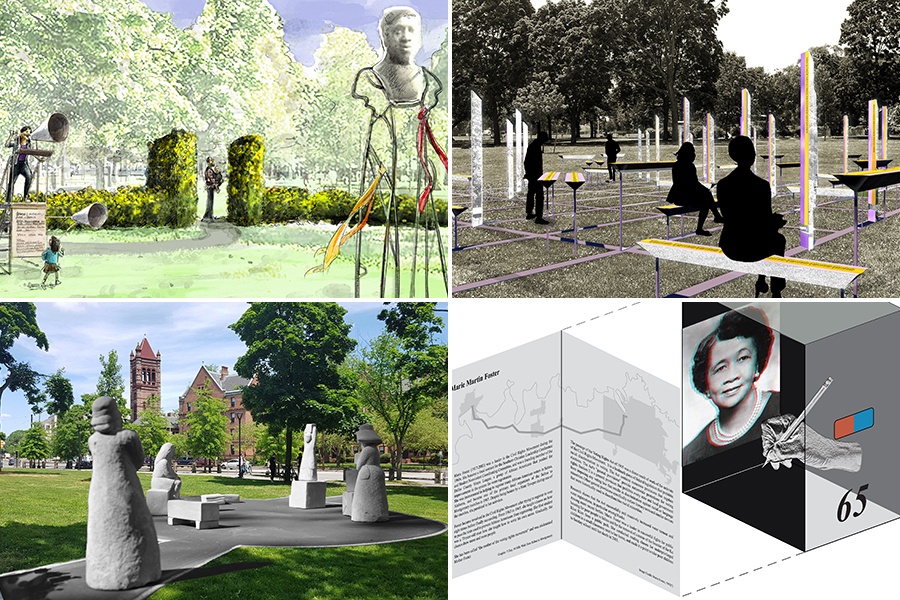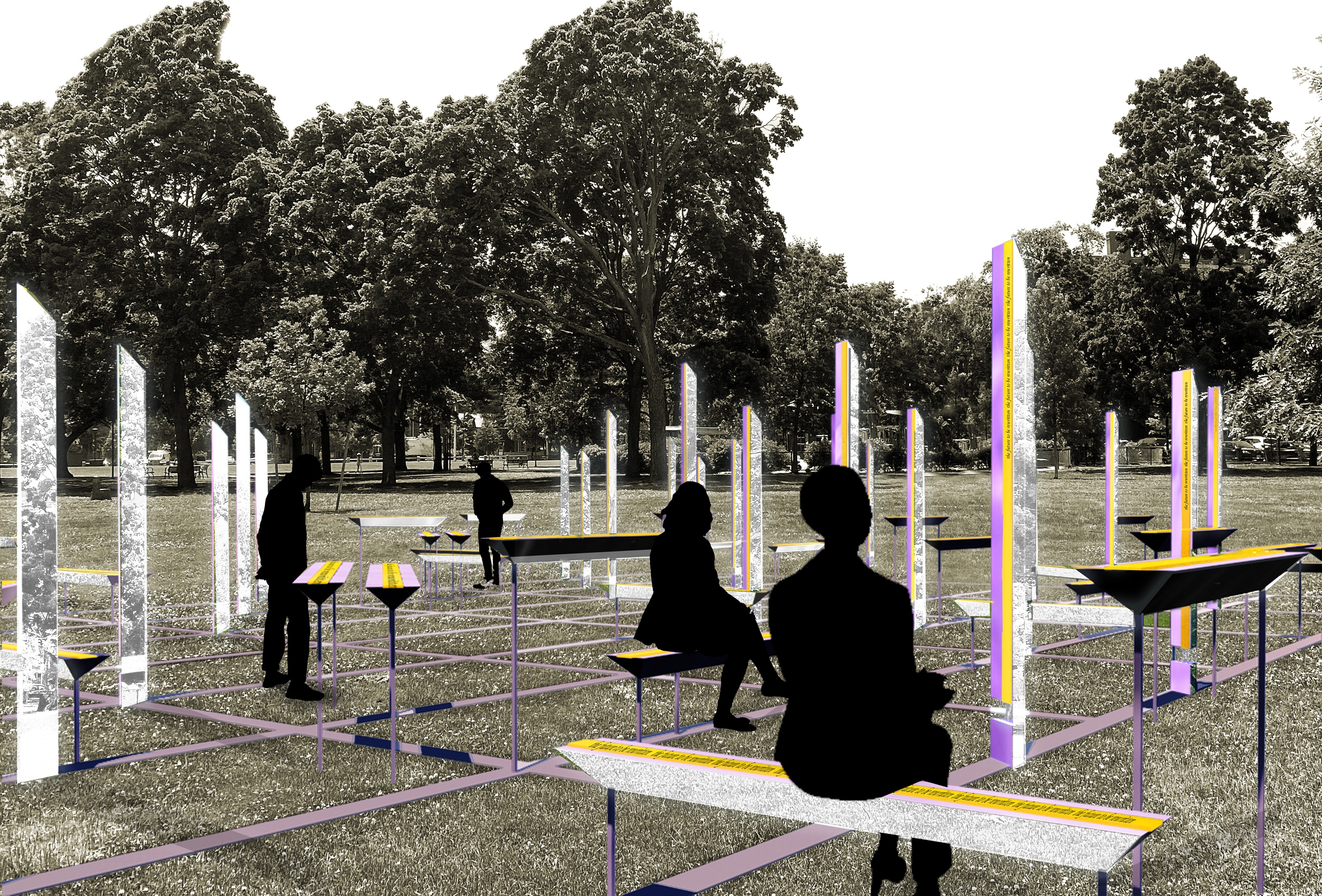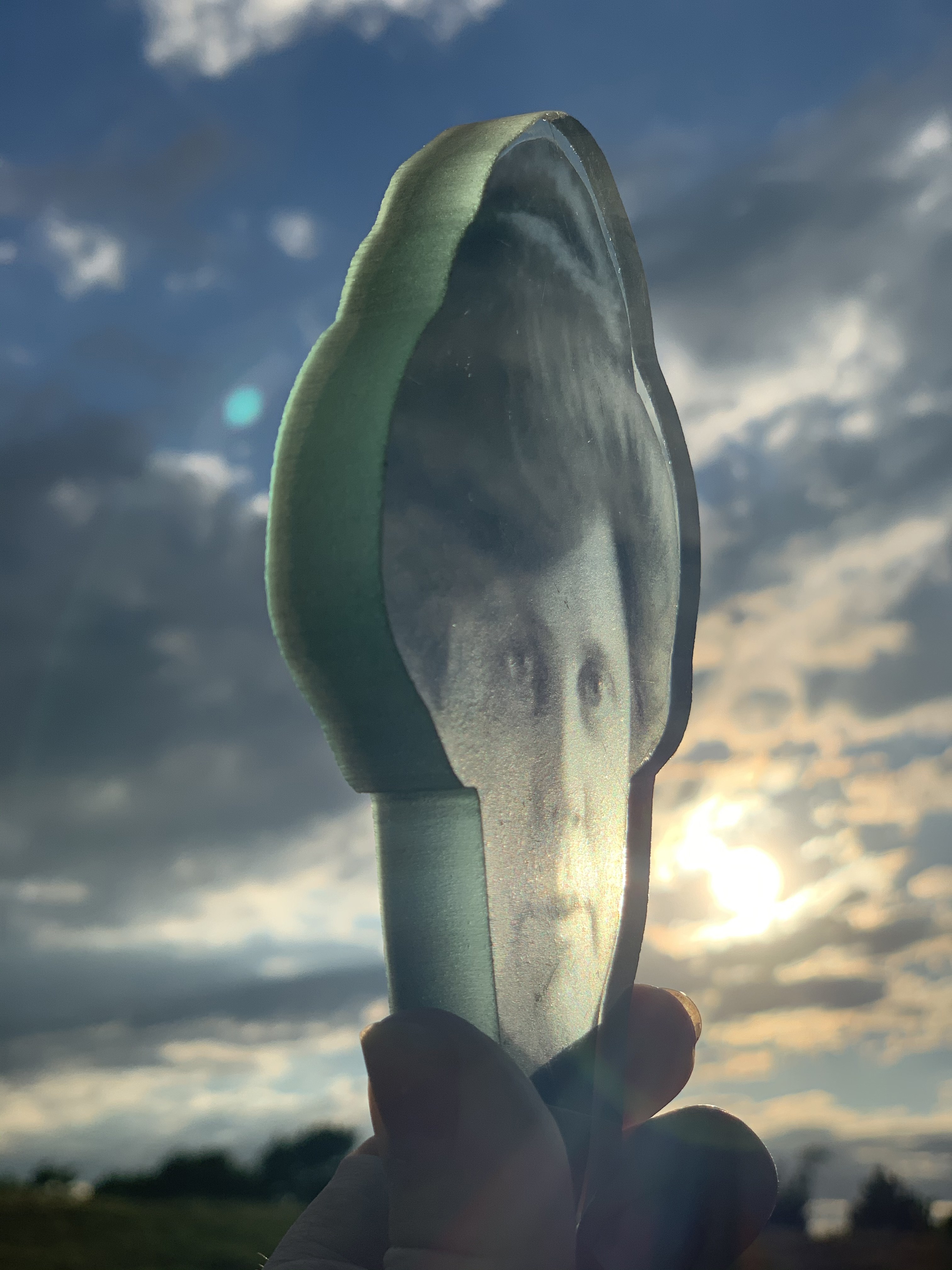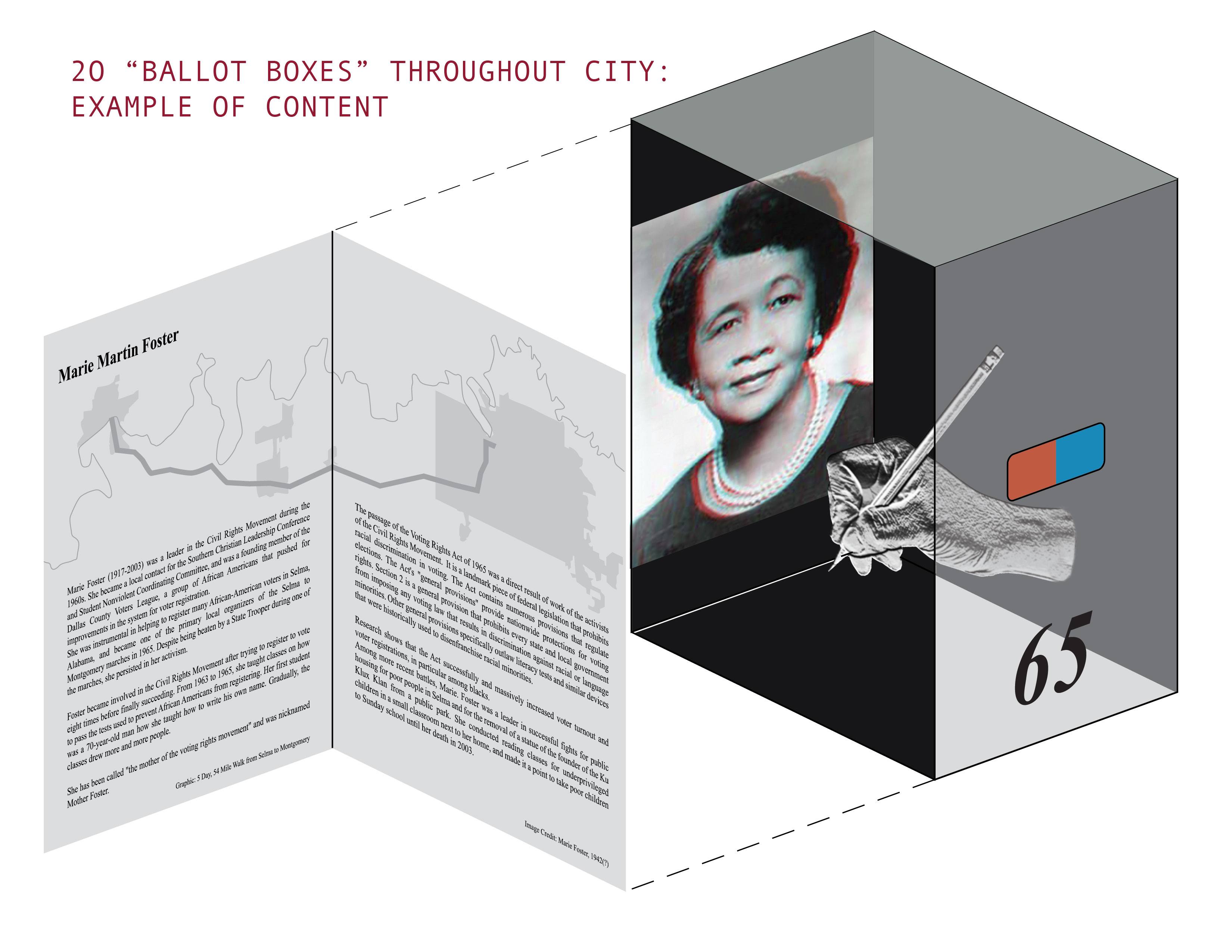What Should Cambridge’s Monument to Women’s Suffrage Look Like?
Here are the four finalists for an important new public art project—and how you can help choose the winner.

Renderings courtesy of Cambridge Arts
Two years ago, Cambridge teen Sofia Bernstein, along with her mother, Kim, began a push to commemorate more women in public arts projects around the city. “It was shocking when I learned that in Cambridge we only have three statues that depict women, and none of them are real historical figures,” Sofia said at a 2018 city council meeting. “Symbols matter, especially to kids. When we see something, we ask our parents ‘What is that?’ And if we don’t see any statues of women in Cambridge, how can we learn about what they did to make Cambridge great?”
The Cambridge City Council quickly jumped into action to commission a public art work to pay tribute to women—and next month, a plan realizing the Bernsteins’ vision will finally be put into place, just in time for the 100th anniversary of the passage of the 19th Amendment, which gave voting rights to women in the United States. There are four artists left in the running for the public art project, and the winner’s work will be permanently installed on Cambridge Common. Per a request from the Cambridge City Council, each of the finalists’ visions honors the passage of the 19th Amendment, while acknowledging the ongoing struggle for voting rights for all.
This public works project comes at a time in which some monuments around the Boston area are facing criticism for the antiquated, racist, or insufficient ways they represent history (see: the North End Columbus statue and the downtown Abraham Lincoln statue). In acknowledgement of this watershed moment, the committee in charge of the 19th Amendment centennial project is soliciting feedback on the four finalists’ works, inviting community members to have a say in Cambridge’s newest public art piece. Take a peek at the four finalists’ works below—and then submit your feedback to the committee before August 3 at 8 p.m. using this online form.
The Future to be Rewritten, by Azra Aksamija

Rendering courtesy of Cambridge Arts

Rendering courtesy of Cambridge Arts
An artist, historian, and MIT associate professor, Aksamija has designed a project that takes the form of a three dimensional palimpsest (a piece of writing material where the words have been erased, but are still visible) that is visible through an arrangement of concrete elements. These elements are inscribed with names and quotes from notable activists, which will be curated through a participatory process. The project name is meant to evoke the idea that history needs to be continually revised to include the voices of those who have been oppressed or omitted.
After the Roses, by Harries Heder

Rendering courtesy of Cambridge Arts

Rendering courtesy of Cambridge Arts
This work, from seasoned Cambridge public artists Mags Harries and Lajos Héder, would take the form of a time line spanning 75 years. The plans feature larger-than-life transparent sculptures of 12 outstanding suffragists, which would glow in the sunlight. The sculptures surround a gathering space located at the 1920 end of the timeline. The gathering space will also feature a speaker’s platform, representing the voice that the suffragists fought for.
#invisible, by Merge Conceptual Design

Rendering courtesy of Cambridge Arts

Rendering courtesy of Cambridge Arts
#invisible is a two-part installation. The first part, located in the Cambridge Commons, consists of an amphitheater centered around a ballot box that can serve as a lectern for speakers in the space. The second part of the project would expand the public work to 20 other locations throughout the city through a series of additional ballot boxes, each of which would feature women, known and unknown, whose stories represent a holistic view of the struggle for women’s suffrage.
Journey to Empowerment, by Nora Valdez

Rendering courtesy of Cambridge Arts

Rendering courtesy of Cambridge Arts
Sculptor Nora Valdez has proposed a project that consists of a series of modern granite sculptures. The figures populate an oval-shaped plaza, facing each other as if they are conversing. Benches and other symbolic objects also would be spread throughout the plaza, encouraging passers-by to sit, reflect, or even play and climb on the sculptures.


